Past Projects
The following are some of ILT’s past projects. Although these projects are no longer active, they are an important part in the history of the institute.
The Student-Teacher Interaction Portal
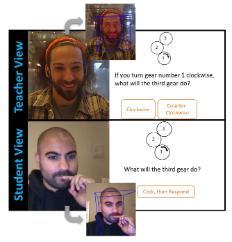
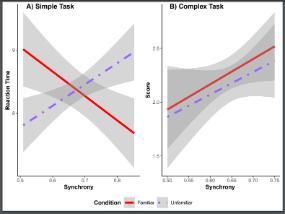
Researcher: Josh Friedman
AI-generated educational videos and learning
 What are the effects of AI-generated educational videos on cognition and learning? Recent advancements in technology have allowed AI to generate many types of hyper-realistic multimedia content from simple text input. While this presents a transformative shift in the way we produce and consume video, in the context of education, it also allows numerous ways to innovate traditional methods of learning. However, it is critical to understand the effects of AI-generated media on learning (if different at all) before we use it. Therefore, we are currently investigating the effects of pedagogical agents (virtual instructors) on cognition and learning.
What are the effects of AI-generated educational videos on cognition and learning? Recent advancements in technology have allowed AI to generate many types of hyper-realistic multimedia content from simple text input. While this presents a transformative shift in the way we produce and consume video, in the context of education, it also allows numerous ways to innovate traditional methods of learning. However, it is critical to understand the effects of AI-generated media on learning (if different at all) before we use it. Therefore, we are currently investigating the effects of pedagogical agents (virtual instructors) on cognition and learning.
Researcher: Jullia Lim
Feedback Interactivity in Formative Assessments
 The study aims to investigate the effects of feedback interactivity on student learning and performance on online formative assessments. Participants are given a short mini-lesson explaining how to find the area and the perimeter of fractal shapes. They are then given a short practice quiz, with conditions varying in the type of feedback the participants receive after each question. Feedback would range in interactivity with differences in the level of input/response prompted to the participant. The study aims to explore how this level of interactivity would affect their performance on a following assessment, and also examine the reception participants had towards their feedback in terms of satisfaction, difficulty, and preferences.
The study aims to investigate the effects of feedback interactivity on student learning and performance on online formative assessments. Participants are given a short mini-lesson explaining how to find the area and the perimeter of fractal shapes. They are then given a short practice quiz, with conditions varying in the type of feedback the participants receive after each question. Feedback would range in interactivity with differences in the level of input/response prompted to the participant. The study aims to explore how this level of interactivity would affect their performance on a following assessment, and also examine the reception participants had towards their feedback in terms of satisfaction, difficulty, and preferences.
Researcher: Ishaq Chowdhury
Computational Thinking and STEM in Public Elementary Schools
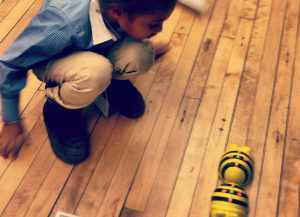 The ILT STEM after-school program at TCCS focuses on promoting critical thinking skills for STEM-related domains using plugged and unplugged activities for grades K-5. Starting in Fall 2014, the group examined activities designed to improve computational thinking and math knowledge. In 2015-2016, programming applications (Scratch Jr., Hopscotch), and Lego WeDo were used to help students learn to code and to develop computational thinking skills. For 2016-2017, we will teach robotics and computational thinking concepts to 2nd and 3rd graders.
The ILT STEM after-school program at TCCS focuses on promoting critical thinking skills for STEM-related domains using plugged and unplugged activities for grades K-5. Starting in Fall 2014, the group examined activities designed to improve computational thinking and math knowledge. In 2015-2016, programming applications (Scratch Jr., Hopscotch), and Lego WeDo were used to help students learn to code and to develop computational thinking skills. For 2016-2017, we will teach robotics and computational thinking concepts to 2nd and 3rd graders.
Principal Investigator: John Black
Researchers: Woonhee Sung, Jung-Hyun Ahn, Yaoli Mao
GeoGames
GeoGames is a set of digital activities for elementary school students that are based on research into children’s conceptions of the world and are designed to help with geography concepts and mapping skills. In playing GeoGames, students build a globe, layer by layer, in an online environment. They first build Planet Earth, adding the North and South poles, continents, mountains and rivers. They can then add political entities’ ountries and their major cities. And finally, they can map journeys. These components can be used separately or together, and in any order, depending on the teacher’s goals and the students’ needs. The built globe also appears, and can be printed, as a flat map, helping students understand map projections. GeoGames is being developed in collaboration with Reach the World, a not-for-profit foundation that offers professional development to teachers in New York City public schools. Funded by a grant from the National Geographic Education Fund Project.
Director: Susan Lowes
To Understand is to Forgive
The project goal is to investigate whether developing a more robust, complete, accurate, and grounded (i.e. taught by means of concrete illustrations of human behavior) mental model of the human emotion system leads to enhancements in social emotional skills in middle-school-aged children.
Researchers: Ilya Lyashevsky, Melissa Cesarano
Failing for Future Learning
Failure is often discussed as a critical part of the pathway to success, but little is actually known about what must happen in the moment of failure to make it productive. Furthermore, failure might afford opportunities to glean information about one’s own performance, about the task at hand, and about the underlying system that governs the problem, but to take advantage of these opportunities require additional effort and skill. Games provide a safe space for failure that permits for a variety of actions and strategies to be taken in response to failure, that could lead to later success. This study draws from various theories of learning, metacognition, motivation, and games research to put forth a theoretical framework for asking: what kinds of responses to failure are most effective for later learning?
Researchers: Alison Lee
Mobile Movement + Math (M3)
M3 is a two-year project granted by the National Science Foundation to investigate the role that mobile technologies can play in STEM learning. The project is a collaborative effort between Teachers College and New York City public television affiliate WNET-13 and their Emmy award winning program, Cyberchase. M3 explores the role that gestures play in our conceptual thinking about mathematical fractions. The goal of the project is to develop a mobile gaming application that utilizes the gestures that best embody our understandings of fractions.
Researchers: Michael Swart
SciMod3
How can multimodal e-texts support science learning and text comprehension? SciMod3 is a research study that investigates how the use of a tablet, multimedia interface can impact and improve science text and graphic comprehension. Through the use of an eye-tracker and other research methodologies, we hope to discover how an expository text comprehension multimedia intervention can be developed for at-risk learners during their critical literacy period in the 4th grade, commonly referred to as the “fourth-grade slump”.
Researchers: Ben Friedman, Alison Lee, Lenin Compres
Math Models in Motion
Math Models in Motion seeks to improve student’s mathematical problem solving abilities by having students create and manipulate visual representations that match underlying problem schemas such as change, combination, and comparison situations. This project also seeks to discover how computer environments can best be designed to aid problem solving by exploring what virtual manipulatives should look like, how visual representations should be manipulated, and how prompts and feedback can aid students in applying problem solving strategies.
Researchers: Ben Friedman
Project LIVE: “Learning in Virtual Environments”
This ongoing project examines how surrogate embodiment and avatar role-play in virtual learning environments (including the MUVEs, Second Life and OpenSim) can be used to facilitate learning and motivation of learners of all ages across a wide range of domains. GEAR (Grounded Embodied Agent Robots) This project examines how learning, understanding, and motivation develop when students move their own bodies and then program robots to perform related movements, so that learning progresses from personal embodiment to embodiment through robot surrogates. In a series of experimental studies, student learning and understanding of programming, science, and math using this embodied experience are compared with learning without the embodied experience. The project is being conducted in Harlem schools participating in TC’s Harlem Ivy after-school program.
Researchers: Carol Lu
SimPhysics: Learning Conservation of Energy through Simulations
 SimPhysics uses a 3-D force feedback joystick to allow students to interact with a simulated environment. This unique simulation allows students to feel the weight of the object that they are holding or moving, as they would in real life. The specific simulation is a catapult that is used to teach mechanical energy transformation and conservation. When playing with SimPhysics, students can feel the differences in the weight of the projectile, feel how different types of energy affect the projectile in the air, and see how energy is transformed.
SimPhysics uses a 3-D force feedback joystick to allow students to interact with a simulated environment. This unique simulation allows students to feel the weight of the object that they are holding or moving, as they would in real life. The specific simulation is a catapult that is used to teach mechanical energy transformation and conservation. When playing with SimPhysics, students can feel the differences in the weight of the projectile, feel how different types of energy affect the projectile in the air, and see how energy is transformed.
Researchers: Douglas Huang, Sorachai Kornkasem
Simulation-Based Learning
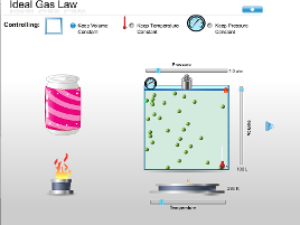 Project 1: Ideal gas law project
Project 1: Ideal gas law project
This simulation-base environment can be best applied in middle school science classroom. In this environment, students are able to learn how Temperature, Volume and Pressure of gas are interrelated and the mechanism underlying ideal gas law phenomena. Currently this is used as my dissertation study instrument.
Project 2: Respiratory system simulation
This simulation-based environment can be best applied in middle school science classroom. The learning progress is structured following a whole-to-part, simple-to complex sequence.
Project 3: Nervous system and pain perception simulation
This simulation-based environment is designed for college-level students to learn some neuroscience concepts. This project is designed for research purposes (comparing different learning sequences and testing the function of dynamic link)
Researcher: Na Li
ARIA (Associating Real and Imaginary Agents)
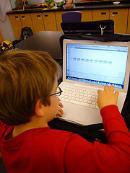 This project investigates how students may learn mathematical concepts within the context of a robot programming environment. Children program both virtual robots in a Adobe Flash-based environment, and real robots with LEGO Mindstorms. Upper-level elementary school students have the opportunity to enhance their knowledge of geometry and numerical estimation by participating in a series of robot-based challenges in which mathematics is the key to success.
This project investigates how students may learn mathematical concepts within the context of a robot programming environment. Children program both virtual robots in a Adobe Flash-based environment, and real robots with LEGO Mindstorms. Upper-level elementary school students have the opportunity to enhance their knowledge of geometry and numerical estimation by participating in a series of robot-based challenges in which mathematics is the key to success.
Researchers: Jonathan Vitale, Michael Swart
DM-S3 – Direct Manipulation of Stories, Systems, and Symbols Using the iPad
 Studies have shown that children improve their comprehension of unfamiliar words when manipulating toys in meaningful ways. This project examines the use of touch-based digital technology, such as the use of Apple’s iPad, in formal instructional settings to improve reading comprehension and systems thinking. Using interactive stories, 1st and 2nd grade students read grade-level appropriate texts and directly manipulate the representative objects on the screen according to the actions and declarations in the text. Based on previous work by Glenberg (2004, 2009) and Segal (2010), we examine the relationships of gestures on comprehension and the effects of discrete versus continuous gestures. For our science intervention on improving systems thinking, interactive systems force middle and high school students to directly manipulate elements in a digitally represented simple system to encourage understanding about the relationship between the various components.
Studies have shown that children improve their comprehension of unfamiliar words when manipulating toys in meaningful ways. This project examines the use of touch-based digital technology, such as the use of Apple’s iPad, in formal instructional settings to improve reading comprehension and systems thinking. Using interactive stories, 1st and 2nd grade students read grade-level appropriate texts and directly manipulate the representative objects on the screen according to the actions and declarations in the text. Based on previous work by Glenberg (2004, 2009) and Segal (2010), we examine the relationships of gestures on comprehension and the effects of discrete versus continuous gestures. For our science intervention on improving systems thinking, interactive systems force middle and high school students to directly manipulate elements in a digitally represented simple system to encourage understanding about the relationship between the various components.
Researchers: Cameron Fadjo, Jeonghan Lee
Puzzle Blocks: Learning Multiplication on the iPad
 Puzzle Blocks are virtual manipulatives to help students learn multiplication. This software introduces students to a series of grouping activities that highlight the connection between counting concrete objects and abstract number concepts. While students move blocks around to complete various puzzles, they receive visual and auditory feedback that helps them see multiplication as repeated addition.
Puzzle Blocks are virtual manipulatives to help students learn multiplication. This software introduces students to a series of grouping activities that highlight the connection between counting concrete objects and abstract number concepts. While students move blocks around to complete various puzzles, they receive visual and auditory feedback that helps them see multiplication as repeated addition.
Researchers: Seungoh Paek
Scientific Problem Solving with Computer Simulations
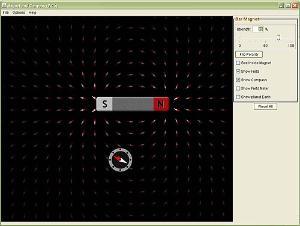 This project offers students an opportunity to work individually to solve scientific problems around concepts such as friction, electronic shock, speed, and mass with the assistance of advanced computer technology. In each problem-solving scenario, students are assigned a few questions to answer, play with the computer simulation, verbally interpret their answer choices and finally the teachers will correct students’ misunderstanding about scientific topics. The interactive computer simulations were designed by the University of Colorado for elementary school students. The teachers will help students acquire important scientific inquiry skills and provide scaffolding understanding. Upon completion, students should a) understand the scientific principles taught as part of the unit; b) appreciate how scientific problems could be solved with computer technology.
This project offers students an opportunity to work individually to solve scientific problems around concepts such as friction, electronic shock, speed, and mass with the assistance of advanced computer technology. In each problem-solving scenario, students are assigned a few questions to answer, play with the computer simulation, verbally interpret their answer choices and finally the teachers will correct students’ misunderstanding about scientific topics. The interactive computer simulations were designed by the University of Colorado for elementary school students. The teachers will help students acquire important scientific inquiry skills and provide scaffolding understanding. Upon completion, students should a) understand the scientific principles taught as part of the unit; b) appreciate how scientific problems could be solved with computer technology.
Researchers: Daoquan Li, Tanner Vea
REflective Agent Learning environment project (REAL)
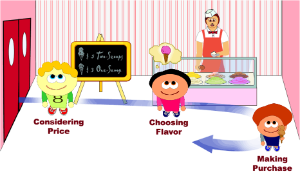 In this project, students embody their understandings of different concepts by using animated agents that interact with a virtual world. The students give their agents knowledge by developed such knowledge representations as concept maps, procedural networks, production systems, and system diagrams, and then the agents “reflect” this knowledge back by using it to interact with the virtual world. REAL provides a framework within which various learning environments can be created with different content. To date, REAL-Planet has been created for biology and ecology (with a focus on learning facts and system relations) and REAL-Business has been created to learn about statistics (with a focus on learning procedures). Other content is planned for the future, as are field tests of REAL’s effect on learning, understanding. and motivation.
In this project, students embody their understandings of different concepts by using animated agents that interact with a virtual world. The students give their agents knowledge by developed such knowledge representations as concept maps, procedural networks, production systems, and system diagrams, and then the agents “reflect” this knowledge back by using it to interact with the virtual world. REAL provides a framework within which various learning environments can be created with different content. To date, REAL-Planet has been created for biology and ecology (with a focus on learning facts and system relations) and REAL-Business has been created to learn about statistics (with a focus on learning procedures). Other content is planned for the future, as are field tests of REAL’s effect on learning, understanding. and motivation.
iWorld (Imaginary World)
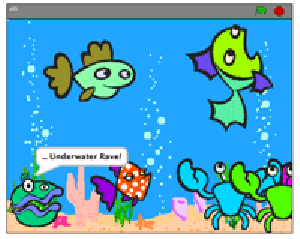 This project examines whether having students create their own video games and digital stories increases their engagement, understanding and learning of mathematical and computational concepts, as well as of language arts skills. As part of this effort, we have developed a standards-aligned curriculum, either as a semester-long after-school enhancement or a three-week (15 day) school day math and computer segment. Elementary and middle school students learn what constitutes a game, different aspects of game and graphic design, and relevant computer programming concepts (such as loops and variables) and mathematical concepts (such as operators, positive and negative numbers, and the number line). Using Scratch, a programming language developed at the MIT Media Lab, they design and create a simple game of lost and found, then expand the world in which the game characters exist by developing a story around the characters after the game is completed.
This project examines whether having students create their own video games and digital stories increases their engagement, understanding and learning of mathematical and computational concepts, as well as of language arts skills. As part of this effort, we have developed a standards-aligned curriculum, either as a semester-long after-school enhancement or a three-week (15 day) school day math and computer segment. Elementary and middle school students learn what constitutes a game, different aspects of game and graphic design, and relevant computer programming concepts (such as loops and variables) and mathematical concepts (such as operators, positive and negative numbers, and the number line). Using Scratch, a programming language developed at the MIT Media Lab, they design and create a simple game of lost and found, then expand the world in which the game characters exist by developing a story around the characters after the game is completed.
Researcher: Cameron Fadjo
HEAT (Handheld Embodied-cognition Augmented-reality Technology)
 This project investigates whether having students program and directly control robots with handheld devices, such as cell phones, increases their engagement, understanding, and learning of programming concepts. As part of this project, we have designed an after-school program for 4th- to 8th-grade students who use the LEGO Mindstorms NXT to build, program and test competition-level robots.
This project investigates whether having students program and directly control robots with handheld devices, such as cell phones, increases their engagement, understanding, and learning of programming concepts. As part of this project, we have designed an after-school program for 4th- to 8th-grade students who use the LEGO Mindstorms NXT to build, program and test competition-level robots.
Researchers: Daoquan Li
Building to Learn
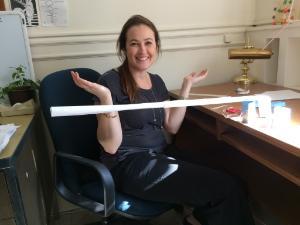 The advent of maker spaces and other constructionist learning environments has made hands on, design based learning more and more popular in communities and schools. But how do students learn science content from these activities that seem to be so suited for grounding science knowledge? This project seeks to understand how students transfer knowledge from discovery based, hands on engineering activities to science content assessments. Specifically, we apply prior work on the use of contrasting cases and feature noticing to engineering design activities. The aim is to discover how reflection, activity construction, and direct instruction for these activities helps students both learn science content, and construct more sophisticated physical structures.
The advent of maker spaces and other constructionist learning environments has made hands on, design based learning more and more popular in communities and schools. But how do students learn science content from these activities that seem to be so suited for grounding science knowledge? This project seeks to understand how students transfer knowledge from discovery based, hands on engineering activities to science content assessments. Specifically, we apply prior work on the use of contrasting cases and feature noticing to engineering design activities. The aim is to discover how reflection, activity construction, and direct instruction for these activities helps students both learn science content, and construct more sophisticated physical structures.
Principal Investigator: Catherine Chase
Researcher: Laura Malkiewich, Aakash Kumar
Action to Abstraction
Gesture is a powerful tool for thinking and learning. It not only reflects learners’ state of knowledge, but can also serve an engine that promotes learning forward actively. Previous research has found that to include gesture into instruction has lasting and positive impact on learning.
This project has three aims: (1) to document how individuals on their own use gestures differently to learn about visual representations. (2) to investigate how those gestures and techniques could be translated into gesture design on mobile devices and classroom instruction (3) to investigate a possible mechanism how those gestures and movements promote students learning and understanding of abstract representation in science. The first phase is to investigate how using of gesture promotes learning of 3-D molecule structure in college level stereochemistry.
Researchers: Jing Zhao, Yaoli Mao
Technology integration and publishing projects
Click here for information on our past technology integration and publishing projects